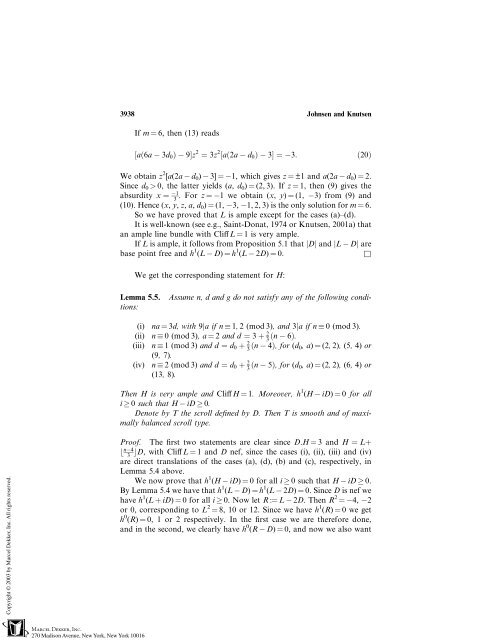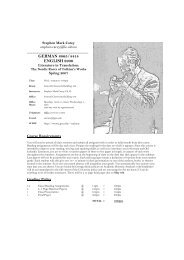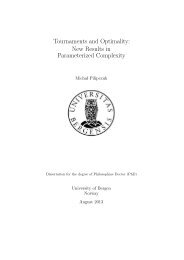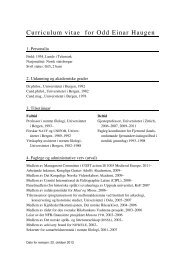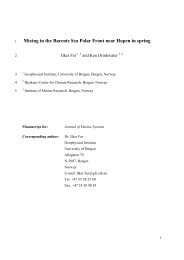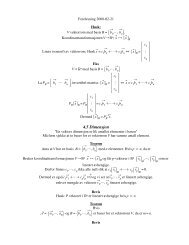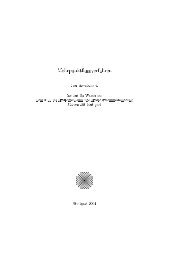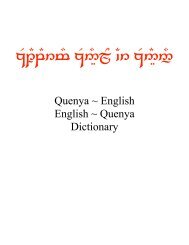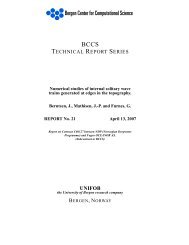Rational Curves in Calabi-Yau Threefolds
Rational Curves in Calabi-Yau Threefolds
Rational Curves in Calabi-Yau Threefolds
Create successful ePaper yourself
Turn your PDF publications into a flip-book with our unique Google optimized e-Paper software.
3938 Johnsen and Knutsen<br />
If m ¼ 6, then (13) reads<br />
½að6a 3d0Þ 9Šz 2 ¼ 3z 2 ½að2a d0Þ 3Š ¼ 3: ð20Þ<br />
We obta<strong>in</strong> z 2 [a(2a d0) 3] ¼ 1, which gives z ¼ ±1 and a(2a d0) ¼ 2.<br />
S<strong>in</strong>ce d0 > 0, the latter yields (a, d0) ¼ (2, 3). If z ¼ 1, then (9) gives the<br />
absurdity x ¼ 1<br />
3 . For z ¼ 1 we obta<strong>in</strong> (x, y) ¼ (1, 3) from (9) and<br />
(10). Hence (x, y, z, a, d0) ¼ (1, 3, 1, 2, 3) is the only solution for m ¼ 6.<br />
So we have proved that L is ample except for the cases (a)–(d).<br />
It is well-known (see e.g., Sa<strong>in</strong>t-Donat, 1974 or Knutsen, 2001a) that<br />
an ample l<strong>in</strong>e bundle with Cliff L ¼ 1 is very ample.<br />
If L is ample, it follows from Proposition 5.1 that jDj and jL Dj are<br />
base po<strong>in</strong>t free and h 1 (L D) ¼ h 1 (L 2D) ¼ 0. &<br />
We get the correspond<strong>in</strong>g statement for H:<br />
Lemma 5.5. Assume n, d and g do not satisfy any of the follow<strong>in</strong>g conditions:<br />
(i) na ¼ 3d, with 9ja ifn 1, 2 (mod 3), and 3ja ifn 0(mod 3).<br />
(ii) n 0(mod 3), a ¼ 2 and d ¼ 3 þ 2<br />
(iii)<br />
3 ðn 6Þ.<br />
n 1(mod 3) and d ¼ d0 þ 2<br />
3 ðn 4Þ, for (d0, a)¼ (2, 2), (5, 4) or<br />
(9, 7).<br />
(iv) n 2(mod 3) and d ¼ d0 þ 2<br />
3 ðn 5Þ, for (d0,<br />
(13, 8).<br />
a)¼ (2, 2), (6, 4) or<br />
Then H is very ample and Cliff H ¼ 1. Moreover, h 1 (H iD) ¼ 0 for all<br />
i 0 such that H iD 0.<br />
Denote by T the scroll def<strong>in</strong>ed by D. Then T is smooth and of maximally<br />
balanced scroll type.<br />
Proof. The first two statements are clear s<strong>in</strong>ce D.H ¼ 3andH¼Lþ n 4 b 3 cD, with Cliff L ¼ 1 and D nef, s<strong>in</strong>ce the cases (i), (ii), (iii) and (iv)<br />
are direct translations of the cases (a), (d), (b) and (c), respectively, <strong>in</strong><br />
Lemma 5.4 above.<br />
We now prove that h 1 (H iD) ¼ 0 for all i 0 such that H iD 0.<br />
By Lemma 5.4 we have that h 1 (L D) ¼ h 1 (L 2D) ¼ 0. S<strong>in</strong>ce D is nef we<br />
have h 1 (L þ iD) ¼ 0 for all i 0. Now let R :¼ L 2D. Then R 2 ¼ 4, 2<br />
or 0, correspond<strong>in</strong>g to L 2 ¼ 8, 10 or 12. S<strong>in</strong>ce we have h 1 (R) ¼ 0weget<br />
h 0 (R) ¼ 0, 1 or 2 respectively. In the first case we are therefore done,<br />
and <strong>in</strong> the second, we clearly have h 0 (R D) ¼ 0, and now we also want


